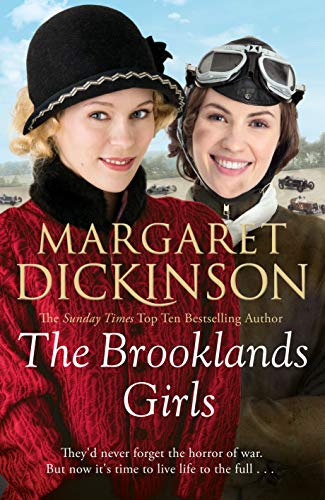The Brooklands Girls (The Maitland Trilogy)
In the aftermath of World War I, former ambulance driver Pips Maitland is struggling to find a purpose in life. She dotes on her niece Daisy and tries to jolly along her brother Robert, who lost an arm and, he believes, his career in the war. But Pips craves excitement – until her friend Milly introduces her to the car-racing set at Brooklands. There Pips meets two very different suitors from her past – if only she could learn to trust again…
The Brooklands Girls suffers from the flaw that often besets the middle part of a trilogy: the initial drama is over, and there is a sense of treading water before, presumably, a dramatic climax in the third book. It doesn’t help that the inter-war years don’t provide as solid a background structure as either of the World Wars. The pacing is pedestrian, and there is a fair amount of repetition of events from the previous book, which is useful at first but quickly grows tedious. Research tends to be crammed into undigested info-dumps or stilted dialogue. (“Do you remember Talbot House in Poperinghe?” “Indeed I do. It was set up by the Reverend Clayton as a place where the soldiers could have rest and recuperation during their time away from the front, wasn’t it?”)
The characterisation is fairly superficial: the village blacksmith Len Dawson, in his unremitting determination not to forgive his son for enlisting as a stretcher-bearer rather than a soldier, is particularly one-dimensional. The depiction of Robert’s PTSD/depression, which seems to consist of staring moodily out of a window until his sister tells him to snap out of it, suggests that the author has never suffered from or cared for anyone with either of those conditions. Apparently Dickinson is hugely popular among saga readers, but I suspect this isn’t her best book.










